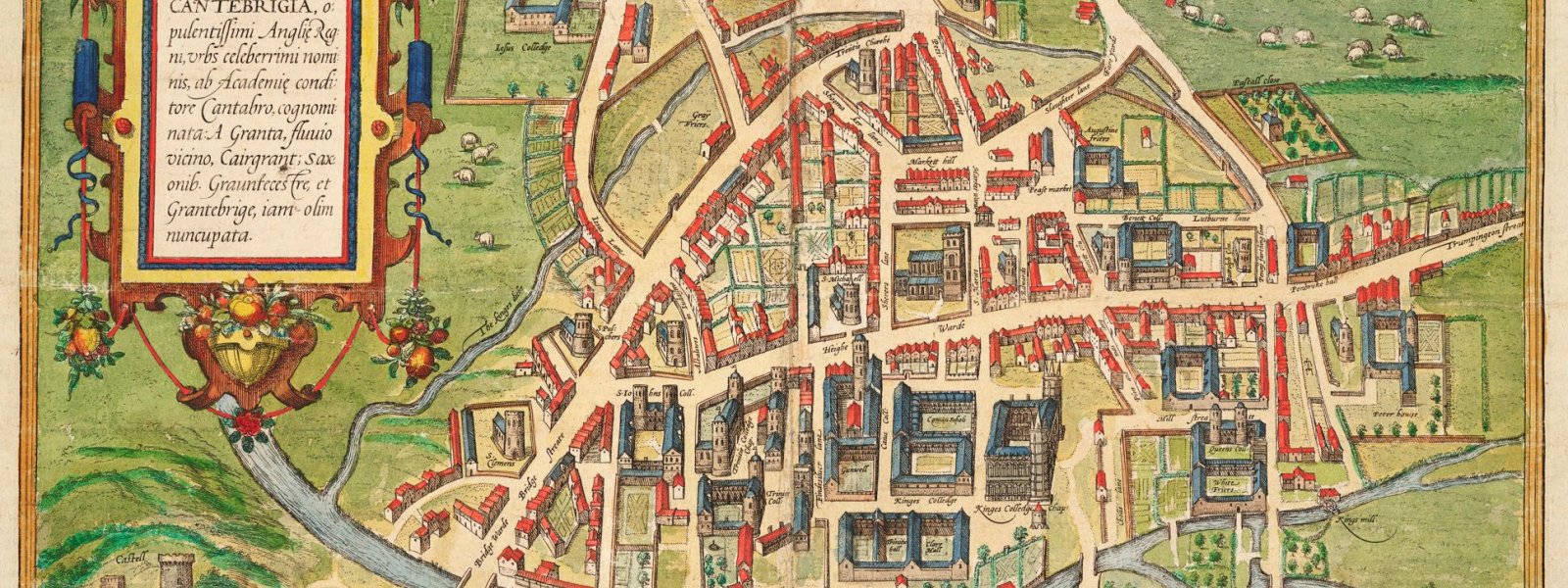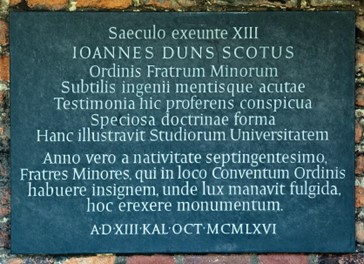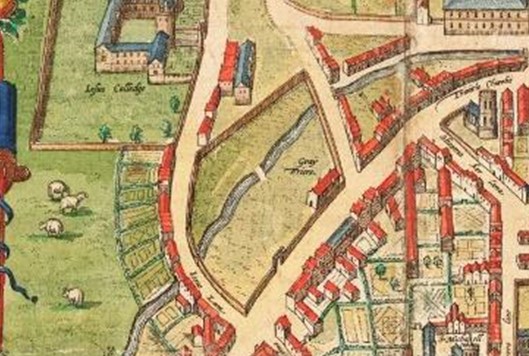A fascinating look back at a time before Sidney’s foundation, when the site was occupied by a very different set of inhabitants known as the Cambridge Grey Friars.
St Francis of Assisi initiated a religious movement that was characterised by its emphasis on poverty, devotion to the Passion of Christ and missionary activity. Francis’s first followers, the Friars Minor — later known after their founder as Franciscans — were first given a rule setting out their aims in 1209. In England they were commonly called Grey Friars after the grey habits, girt with a rope rather than a belt, that were worn as a symbol of their vow of poverty. The 13th century saw a remarkable expansion of the Franciscan order all over Europe.
On 10 September 1224, just 15 years after the first group of friars went on foot from Assisi to Rome to have their way of life approved by Pope Innocent III, nine Franciscans landed at Dover. That year they settled in Canterbury, London and Oxford, where they gathered further recruits. It was most probably in 1225 when the friars arrived in Cambridge, where they were given half of a house formerly belonging to Benjamin the Jew, which was also used as the local gaol.
In the 1260s they moved from this inconvenient lodging to the current Sidney site. Soon after their arrival in Cambridge the Franciscans became involved in the teaching of theology in the University, as part of an international network of theologians. As a result, the community of the Cambridge Grey Friars was more mobile than most Franciscan houses. The philosopher John Duns Scotus — whose stay in Cambridge is commemorated by a plaque in Cloister Court — also taught in Oxford, Paris and Cologne. Franciscan lecturers in Cambridge came from Ireland, Italy, Aragon and Portugal. Although Sidney, founded in 1596, is the youngest of the old Cambridge Colleges, its site has been associated with education for seven and a half centuries.
The Duns Scotus plaque in Cloister Court
The friars received important royal bounty to maintain their educational activities at the Cambridge site. In 1304 Edward I gave 25 marks to the Grey Friars of Cambridge, and this gift became a regular annual alms until Henry VIII ordered the dissolution of the monasteries.
When the English Reformation began in 1534, there were around 60 Conventual Franciscan friaries in England, including the Grey Friars of Cambridge, and six Observant friaries. The Observants — members of a reform movement in the Franciscan order, who were noted for their opposition to the Royal Supremacy — were the first to be dissolved. The Conventual Franciscan friaries survived initially despite their low income, but their surrender into the king’s hands was engineered in 1538 and 1539. Twenty-four friars signed the deed of surrender of the Cambridge house in September 1538. The University, which had long used the Franciscan church for academic functions, hoped to acquire it, but in 1546 the site was granted to Henry VIII’s new foundation of Trinity College. The friary’s building materials were taken to be used in the construction of Trinity.
In 1958 glass from the demolished church was discovered during an archaeological dig in Cloister Court and some of the fragments have been worked into windows in the Antechapel and the Old Library. The last of the Cambridge Franciscans, Thomas Wood, B.D., became a chaplain to Queen Mary and is last mentioned in the records in 1579, aged 80, as a prisoner in the Marshalsea.
This fascinating map of Cambridge from 1575 displays the friary site where Sidney would be built just 21 years later. See the full map on the University website. The map also displays Sidney Street — one of Cambridge’s oldest streets — which was formerly known as Conduit Street due to a system for piping water to the friary.
An extract from Cantebrigia (Cambridge) in 1575 by Georg Braun. © Image copyright Cambridge University Library
A key feature of the Grey Friars site on the map by Georg Braun is the protective boundary that runs through it, known as the King's Ditch. This defensive ditch, probably of pre-Conquest origin but remodelled by Henry III, complemented the barrier provided by the River Cam and marked the emerging urban boundary. By the 16th century it had become an open sewer.
Spot the King’s Ditch running through the current Fellows’ Garden and Master’s Lawn in the Loggan view of College below, which also shows a conveniently placed privy close by! There are still clear traces of the King’s Ditch in the Fellows’ Garden where the ground falls just beyond the garden side of Cloister Court.
A view of the King’s Ditch and a conveniently placed privy on the far left, taken from ‘Sidney Sussex College’, Cantabrigia Illustrata, 1690, by David Loggan
If you have something that would make a good news or feature item, please email news@sid.cam.ac.uk



